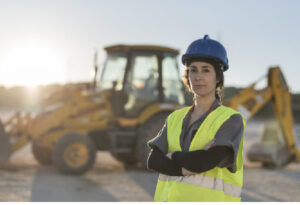
Read on to learn about how the construction industry will be impacted by the upcoming seasonal temperature changes as we move into fall and eventually winter.
Construction is one of the biggest drivers of the economy in our society, even when you factor in the continual movement towards online commerce. We still need roads to drive on, offices and homes to work and live in, and more, and construction makes it possible. While construction feels like it happens continually throughout the year, it is actually heavily dependent on the climate, season, and location of the construction. During different times of year – subject to different temperatures, humidity levels, and other factors – construction materials and best practices change. Read on to learn about how the construction industry will be impacted by the upcoming seasonal temperature changes as we move into fall and eventually winter.
Cold
The hallmark of autumn and winter is that temperatures drop, and all the work has to be done in a colder environment. There are plenty of regions where colder temps are the norm, and they have construction methods that always work, but in this region, we have to change our practices to fit the weather. Specifically, cold weather means more layers for workers (which make it harder to move), the possibility of icy surfaces, and construction materials that contract. Ice crystals that form in concrete or cement can cause it to be weaker than it should when it cures. Surfaces that have contracted in cold temperatures before being painted could end up looking cracked when it warms up.
Wet
Wet weather is another staple of the season, causing construction issues and safety problems. Excessive water on a construction site can cause slippery conditions, make it dangerous to work with electrical components, and damage metal structures (often causing rust). Moisture can also build up under surfaces and installed textiles, leading to eventual mold growth. Flooding water can also expose sinkholes and make construction sites dangerously muddy.
Storms
Fall and winter both have their fair share of storms. Fall often brings thunderstorms to this area, and occasionally hurricanes make their way up the coast. During winter, we get nor’easter storms and blizzards. Storms that bring flooding, high winds, and hail can create substantial damage. Materials can be blown around sites, glass can be broken by debris or hail, and metal (especially sheet metal) can be dented and damaged by branches. The best protection is to prepare for the storm by securing materials so they can’t be blown around and covering breakable materials while you wait for the storm to pass. While it may make the process slower, it is better to be safe and wait.
Concrete Visions Will Get The Job Done Right
Concrete Visions has been working with clients for over 25 years. Our G&M Services installers are certified with the industry’s major firestop product manufacturers. As part of our firestop service, we can assess abnormal field conditions and, with the manufacturer’s technical support assistance, provide engineering judgments in a timely fashion to comply with contract specifications. Our Field Mechanics undergo ongoing training, including mandatory monthly safety meetings, weekly Toolbox Talks where safety and equipment information is shred, and trainings on safe work standards and safety best practices.
